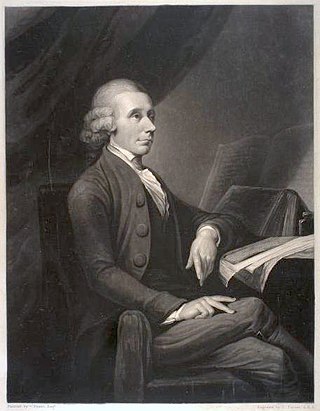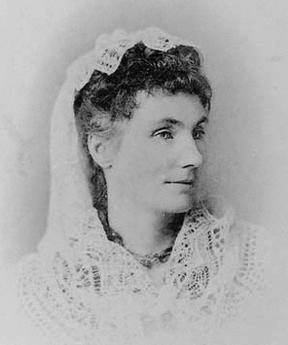
The Keeper or Master of the Rolls and Records of the Chancery of England, known as the Master of the Rolls, is the President of the Civil Division of the Court of Appeal of England and Wales and Head of Civil Justice. As a judge, the Master of the Rolls is second in seniority in England and Wales only to the Lord Chief Justice. The position dates from at least 1286, although it is believed that the office probably existed earlier than that.
Arthur Brooke was an English poet who wrote and created various works including The Tragical History of Romeus and Juliet (1562), considered to be William Shakespeare's chief source for his tragedy Romeo and Juliet.
Joseph Milner (1744–1797), an English evangelical divine, has a reputation particularly for his work on The History of the Church of Christ (1794–1809).

The Theological Repository was a periodical founded and edited from 1769 to 1771 by the eighteenth-century British polymath Joseph Priestley. Although ostensibly committed to the open and rational inquiry of theological questions, the journal became a mouthpiece for Dissenting, particularly Unitarian and Arian, doctrines.

The British Critic: A New Review was a quarterly publication, established in 1793 as a conservative and high-church review journal riding the tide of British reaction against the French Revolution. The headquarters was in London. The journal ended publication in 1843.
Thomas Bird Mosher (1852–1923) was an American publisher out of Portland, Maine. He is notable for his contributions to the private press movement in the United States, and as a major exponent of the British Pre-Raphaelites and Aesthetes as well as other British Victorians. His book styles reflected those of William Pickering (publisher) and the Whittinghams, the books of the Bodley Head, the Daniel Press, the Eragny Press and Charles Ricketts of the Vale Press, among others.
William Baldwin was an English author.

Justice of the Common Pleas was a puisne judicial position within the Court of Common Pleas of England and Wales, under the Chief Justice. The Common Pleas was the primary court of common law within England and Wales, dealing with "common" pleas. It was created out of the common law jurisdiction of the Exchequer of Pleas, with splits forming during the 1190s and the division becoming formal by the beginning of the 13th century. The court became a key part of the Westminster courts, along with the Exchequer of Pleas and the Court of King's Bench, but with the Writ of Quominus and the Statute of Westminster, both tried to extend their jurisdiction into the realm of common pleas. As a result, the courts jockeyed for power. In 1828 Henry Brougham, a Member of Parliament, complained in Parliament that as long as there were three courts unevenness was inevitable, saying that "It is not in the power of the courts, even if all were monopolies and other restrictions done away, to distribute business equally, as long as suitors are left free to choose their own tribunal", and that there would always be a favourite court, which would therefore attract the best lawyers and judges and entrench its position. The outcome was the Supreme Court of Judicature Act 1873, under which all the central courts were made part of a single Supreme Court of Judicature. Eventually the government created a High Court of Justice under Lord Coleridge by an Order in Council of 16 December 1880. At this point, the Common Pleas formally ceased to exist.
The Archdeacon of Cornwall is a senior cleric in the Church of England Diocese of Truro.

Essex Street Chapel, also known as Essex Church, is a Unitarian place of worship in London. It was the first church in England set up with this doctrine, and was established when Dissenters still faced legal threat. As the birthplace of British Unitarianism, Essex Street has particularly been associated with social reformers and theologians. The congregation moved west in the 19th century, allowing the building to be turned into the headquarters for the British and Foreign Unitarian Association and the Sunday School Association. These evolved into the General Assembly of Unitarian and Free Christian Churches, the umbrella organisation for British Unitarianism, which is still based on the same site, in an office building called Essex Hall. This article deals with the buildings, the history, and the current church, based in Kensington.
English county histories, in other words historical and topographical works concerned with individual ancient counties of England, were produced by antiquarians from the late 16th century onwards. The content was variable: most focused on recording the ownership of estates and the descent of lordships of manors, thus the genealogies of county families, heraldry and other antiquarian material. In the introduction to one typical early work of this style, The Antiquities of Warwickshire published in 1656, the author William Dugdale writes:
I offer unto you my noble countriemen, as the most proper persons to whom it can be presented wherein you will see very much of your worthy ancestors, to whose memory I have erected it as a monumentall pillar and to shew in what honour they lived in those flourishing ages past. In this kind, or not much different, have divers persons in forrein parts very learnedly written; some whereof I have noted in my preface: and I could wish that there were more that would adventure in the like manner for the rest of the counties of this nation, considering how acceptable those are, which others have already performed

Thomas Tredgold (1788–1829) was an English engineer and author, known for his early work on railroad construction. His definition of civil engineering formed the basis of the charter of the Institution of Civil Engineers.

Jessie Margaret Edmondston Saxby was an author and folklorist from Unst, one of the Shetland Islands of Scotland. She also had political interests and was a suffragette.






